
Helixing, an often-overlooked aspect of the machining world, holds significant importance in the realm of cutting tools. At its core, it’s about the spiral design that many cutting tools adopt, which is predominantly determined by the helix angle. This angle, subtly adjusted, can drastically impact the efficiency, finish, and longevity of the tool in operation. As industries evolve and demand more precision, understanding the nuances of the helix angle becomes paramount.
This article delves into the intricate world of helixing, unraveling its concepts, applications, and essential considerations.
The Basics of Helix Angles & Helixing
In the realm of machining, the helix angle and the principle of helixing are essential concepts, often distinguishing a successful operation from a mediocre one. These terms are deeply entrenched in the design, functionality, and efficiency of cutting tools. But what exactly are helix angles, and why is helixing such an integral part of modern machining?
What is the Helix Angle?
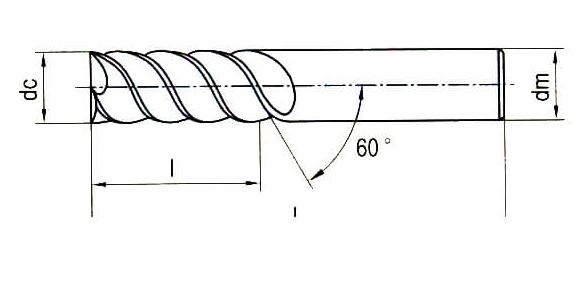
The anatomy of helix angle
In simpler terms, imagine unwinding a spiral or a helix from a cylinder; the angle that this spiral makes with the cylinder’s base is the helix angle. This angle is a crucial parameter in determining how a tool interacts with the material it’s cutting.
At its core, the helix angle refers to the angle between the leading edge of a cutting tool and the axis of the tool. This angle is a fundamental aspect of cutting tools, and its importance cannot be overstated. The value of the helix angle determines several facets of the cutting operation:
- Cutting Forces: The helix angle plays a vital role in distributing the forces during the cutting process. A tool with a higher helix angle often experiences more axial force and less radial force, which can lead to smoother cuts but might also induce greater tool wear.
- Chip Evacuation: Efficient removal of chips from the cutting zone is crucial to prevent re-cutting of chips and potential tool breakage. A larger helix angle typically aids in better chip evacuation.
- Heat Generation: The friction during cutting leads to heat. The helix angle can influence the amount and distribution of this heat, potentially affecting both tool life and workpiece integrity.
Helixing: A Brief Overview
Helixing, derived from the concept of the helix angle, essentially denotes the design and application of tools that incorporate a helical structure. In the context of cutting tools like end mills or drills, helixing pertains to the spiral design of their cutting edges. This design is central to how the tool engages with and shears the material.
1. Variations in Helix Angles
While tools can have a standard helix angle throughout their cutting edge, variations exist. Variable helix tools, for instance, possess different helix angles along their flutes. This design can offer benefits like reduced vibrations and improved surface finishes by ensuring that each flute engages with the material differently, distributing cutting forces more evenly.
2. Factors Influencing the Choice of Helix Angle
Choosing the appropriate helix angle for a given machining operation requires careful consideration of various factors:
- Material Type: Harder materials might require a different helix angle compared to softer materials. For instance, a larger helix angle might be preferred for softer materials like aluminum to aid in chip evacuation, whereas a smaller angle might be more suitable for harder materials to increase tool rigidity.
- Depth of Cut: Deeper cuts might benefit from tools with a smaller helix angle to provide more tool stability.
- Type of Cut: Whether it’s a finishing operation or a roughing cut can influence the ideal helix angle. Finishing cuts, aiming for smooth surface finishes, might often employ tools with higher helix angles.
Why the Helix Angle Matters?
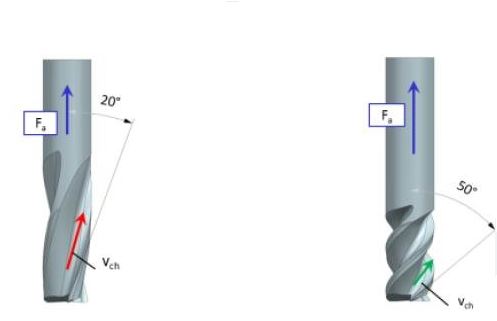
CNC cutting tools with low and high helix angles
The realm of precision machining brims with concepts that dictate the quality and efficiency of outcomes, and among these, the helix angle stands prominent. But, why does this angle carry such weight in the world of machining? What makes it so consequential that tool designers and machinists deliberate extensively over its optimal value? Let’s embark on a journey to understand the significance of the helix angle.
- Heat Management
During any cutting operation, friction invariably leads to heat generation. This heat, if not controlled or managed properly, can adversely affect both the cutting tool’s longevity and the final quality of the workpiece. The helix angle, in its silent efficacy, plays a pivotal role here.
A tool with an optimal helix angle ensures that heat is distributed evenly across the cutting zone, reducing hotspots that could harm the tool or deform the workpiece.
- Distribution of Cutting Forces
The helix angle is not just a static parameter on a tool’s blueprint; it’s a dynamic element dictating the forces during machining. A tool with a larger helix angle tends to have more axial forces and reduced radial forces. This characteristic can result in smoother, more efficient cuts, especially in materials that are more malleable. However, it might also challenge the tool’s longevity, particularly when used in harder materials.
- Efficiency in Chip Evacuation
One of the prime challenges during any machining operation is the efficient removal of chips. A clogged cutting zone not only reduces the quality of the cut but also poses risks like tool breakage. The helix angle is instrumental in determining how chips are formed and evacuated. Larger helix angles generally promote more efficient chip removal, particularly beneficial for materials that tend to produce longer chips.
- Stability and Vibrations
Vibrations during machining can be the bane of precision. Every machinist seeks to minimize these as they can lead to imperfections on the workpiece and reduce tool life. The helix angle, once again, comes into play.
Tools with a specific helix angle can provide greater stability, reducing the chances of chatter and vibrations. In certain scenarios, variable helix tools, where the helix angle changes along the flute’s length, are employed to distribute cutting forces variably and further minimize vibrations.
- Material Specific Considerations
Different materials pose unique challenges and demand specific tool geometries for optimal results. The helix angle becomes a customizable parameter, tailored to meet the idiosyncrasies of each material. For instance, softer materials might benefit from a larger helix angle due to their chip formation characteristics, while harder materials might require a smaller angle for tool rigidity and durability.
Table: Material type and preferred helix angles for machining
| Material Type | Optimal Helix Angle | Angle Range | Reasoning |
|---|---|---|---|
| Aluminum | Larger | 40°-50° | Facilitates better chip evacuation, given aluminum’s propensity to produce longer, curled chips. |
| Steel | Moderate | 28°-40° | Balances between chip evacuation and tool rigidity. |
| Titanium | Moderate to Small | 20°-35° | Requires a balance between material removal rates and tool longevity. |
| Thermoplastics | Larger | 35°-48° | To reduce melting and achieve cleaner cuts. |
Variations in Helix Angle: A Closer Look
The helix angle, an integral component of cutting tools, can often be the linchpin for a successful machining operation. Understanding the variations in this angle, their implications, and their applications can mean the difference between efficient and compromised tool performance.
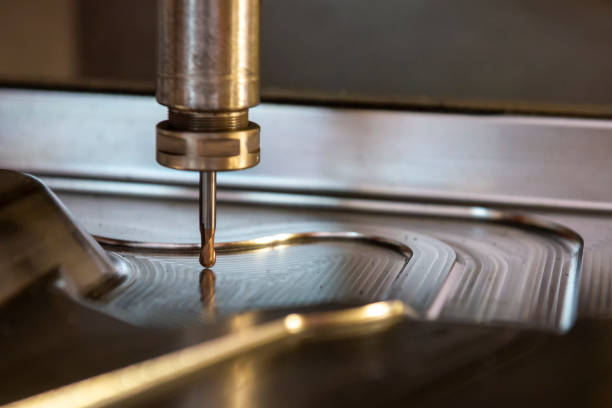
The CNC milling machine cutting the mold parts by solid ball end-mill tool. The hi-precision mold and die manufacturing concept by machining center.
End mill with high helix angle on the action
The Spectrum of Helix Angles
Helix angles can vary significantly, and each variation has its unique application:
- Low Helix Angles (30° or less): These angles offer higher rigidity, making them suitable for harder materials where strength is paramount. The axial forces generated with these angles are typically more considerable, ensuring minimal tool deflection.
- Medium Helix Angles (30° to 45°): Often considered a general-purpose range, medium helix angles strike a balance between rigidity and efficient chip evacuation. This range is versatile and can be used across a variety of materials.
- High Helix Angles (45° or more): These angles, by design, favor chip evacuation. The radial forces they generate, coupled with the shearing action they introduce, make them optimal for softer materials, preventing material tearing and reducing heat.
Table: Overview of Helix Angle Ranges
| Helix Angle Range | Typical Use | Key Benefits |
|---|---|---|
| Low (30° or less) | Hard materials | Enhanced rigidity; minimizes tool deflection |
| Medium (30° to 45°) | Versatile across materials | Balanced rigidity and chip evacuation |
| High (45° or more) | Soft materials | Efficient chip evacuation; reduced heat |
Tailoring Helix Angles for Specific Materials
Not all materials are created equal, and neither should the helix angles used to machine them. Aluminum, with its propensity to produce longer, curled chips, benefits from a higher helix angle. In contrast, harder metals, like stainless steel or titanium, require the strength and stability that lower helix angles offer.
Table: Tailoring Helix Angles for Specific Materials
| Material | Helix Angle Type | Angle Range |
|---|---|---|
| Steel | Medium | 30° to 45° |
| Aluminum | High | 45° or more |
| Brass | High | 40° to 60° |
| Titanium | Low to Medium | 20° to 40° |
| Stainless Steel | Medium | 30° to 50° |
| Copper | High | 40° to 60° |
| Nickel Alloy | Low to Medium | 25° to 40° |
| Thermoplastics | High | 40° or more |
| Cast Iron | Low | 10° to 30° |
| Bronze | High | 35° to 55° |
| Composites | Varies | 20° to 50° |
| Tool Steel | Medium | 25° to 40° |
| Hardened Steel | Low | 10° to 25° |
| Tungsten Carbide | Low | 10° to 30° |
| Polycarbonate | High | 40° or more |
Note: The angle ranges provided are general guidelines. Depending on the specific alloy, composition, or machining conditions, optimal helix angles may vary.
Tailoring Helix Angles for Specific Applications
In machining, understanding the subtleties of the helix angle is pivotal, especially when addressing specific application needs. By fine-tuning this angle, machining processes can be optimized for efficacy, surface finish, and tool longevity.
- Deep Hole Drilling: In deep hole drilling, efficient chip evacuation is vital. A higher helix angle aids in better chip removal, reducing jamming risks. Efficient evacuation also curtails heat, which might cause tool wear or workpiece damage.
- Thin-Walled Components: Machining thin walls can lead to wall deflection. A cutter with a larger helix angle can decrease lateral forces, thus reducing deformation risks for these fragile parts.
- Pocketing and Slotting: Here, tool rigidity and chip removal are primary concerns. A moderate helix angle can offer both stability and efficient chip evacuation.
- High Precision Requirements: For high-precision tasks, vibration control is essential. A lower helix angle can often mitigate vibrations, ensuring a smoother finish. This is vital when working with hard materials or complex geometries.
- Tool Longevity: The helix angle can influence a cutter’s lifespan, especially in abrasive materials. An optimal helix angle can ensure even wear distribution, potentially extending tool life.
- High Feed Rate Operations: Efficient chip evacuation is vital for high feed rates, especially in softer materials. A high helix angle can offer rapid chip removal, allowing uninterrupted and speedy processes.
- Difficult-to-Machine Materials: Some materials, like Inconel or titanium, are notoriously tough to machine. They often demand a tool with a lower helix angle for cleaner cuts and tool longevity.
Table: Helix Angle Recommendations for Specific Application Scenarios
| Application Scenario | Helix Angle Recommendation (Angle Range) |
|---|---|
| Deep Hole Drilling | High (40°-60°) |
| Thin-Walled Components | High (40°-60°) |
| Pocketing and Slotting | Moderate (20°-40°) |
| High Precision Requirements | Low (10°-20°) |
| Tool Longevity | Low to Moderate (10°-40°) |
| High Feed Rate Operations | High (40°-60°) |
| Difficult-to-Machine Materials | Low (10°-20°) |
Factors Influencing the Choice of Helix Angle
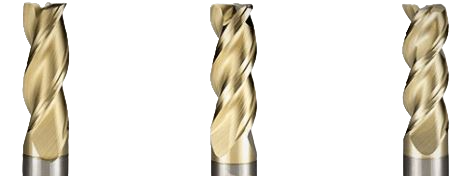
CNC cutting tools with 35°, 40°, and 45° helix angle simultaneously
The helix angle, which is the angle between the leading edge of a cutting tool and its axis, is a crucial parameter in tool design. Its value can significantly influence a tool’s performance, the quality of the surface finish, and the lifespan of the tool itself. So, what factors come into play when determining the optimal helix angle for a specific machining application? Let’s delve deeper.
1. Material to be Machined The type of material being machined plays a pivotal role in determining the appropriate helix angle. Harder materials, like titanium, demand a different helix angle compared to softer materials like aluminum. For instance, softer materials generally require a larger helix angle to facilitate efficient chip evacuation, thereby reducing the chances of tool clogging and breakage.
2. Type of Machining Operation Different machining operations, such as milling, drilling, or tapping, have unique requirements. A milling operation might prioritize chip evacuation, while a drilling operation might emphasize tool rigidity. Understanding the primary objective of the machining operation can guide the selection of the helix angle.
3. Tool Rigidity The helix angle affects the core diameter and, consequently, the rigidity of the tool. A lower helix angle often provides a thicker core, imparting greater rigidity to the tool. This becomes particularly important when machining harder materials or when higher cutting forces are expected.
4. Desired Surface Finish A cutting tool’s helix angle can influence the resultant surface finish on the workpiece. Generally, a larger helix angle can lead to a smoother finish, especially in side milling operations. However, this isn’t a one-size-fits-all rule; the exact requirements of the workpiece and operation matter.
5. Machine Tool Capabilities Not all machine tools are created equal. The capabilities of the machine tool, in terms of spindle speed, power, and rigidity, can influence the choice of helix angle. Tools with larger helix angles might demand higher spindle speeds, which not all machines can provide.
To better visualize the relationship between some of these factors and the ideal helix angle, let’s consider a table:
Table: Helix angle preference under different factors
| Factor | Helix Angle Preference | Rationale |
|---|---|---|
| Hard Materials | Smaller Angle | Ensures tool rigidity and manages high cutting forces. |
| Soft Materials | Larger Angle | Facilitates chip evacuation and reduces clogging. |
| Milling Operations | Variable, often Larger | Aims for efficient chip evacuation and surface finish. |
| Drilling Operations | Smaller to Moderate | Requires tool rigidity and stability. |
6. Heat Generation and Tool Wear Heat generation is inevitable in machining, but its management is essential. A tool’s helix angle can influence the amount of heat generated and its dissipation. In materials that are difficult to machine, a lower helix angle might reduce heat generation, prolonging tool life.
7. Stability and Vibration The helix angle can affect the stability of the cutting process. Incorrect helix angles can lead to increased vibrations or chatter, negatively impacting the tool life and surface finish. The choice of helix angle should ensure stable and vibration-free cutting.
How do Different Helix Angles of Cutting Tools Influence the Machining?
The helix angle of a cutting tool is a vital aspect of its design, wielding significant influence over the machining process. By determining how a tool engages with a workpiece and the nature of chip formation, the helix angle plays a crucial role in operational efficiency, finish quality, and overall tool performance. Let’s delve into the intricacies of how varying helix angles impact machining.
1. Chip Formation and Evacuation
One of the most direct effects of the helix angle is on chip formation and its subsequent removal. The helix angle defines the path and curl of the chip being removed from the material. A more acute helix angle tends to produce smaller, tighter curls, while a larger helix angle typically results in longer, more open chips. Efficient chip evacuation is critical as it prevents re-cutting, reduces heat, and minimizes tool wear.
2. Cutting Forces and Tool Deflection
The helix angle directly impacts the direction and magnitude of the cutting forces. A lower helix angle usually distributes forces axially, meaning along the tool’s length, while a higher helix angle results in more radial forces, pushing the tool away from the center. This distinction can influence tool deflection, especially in long tools, where deflection can compromise accuracy.
3. Surface Finish and Tool Engagement
The angle at which the cutting tool engages the material can profoundly influence the quality of the surface finish. A tool with a larger helix angle often provides a shearing action that can be beneficial for materials prone to burring or tearing. Conversely, harder materials might benefit from a tool with a smaller helix angle, ensuring a robust and stable cut.
4. Heat Generation and Tool Longevity
The helix angle can also affect heat generation at the cutting interface. A tool that’s not optimized for the material can generate excessive heat, potentially leading to premature tool wear, material deformation, or even tool failure.
5. Vibration and Stability
Machining operations, especially those at high speeds or with long tool overhangs, can be susceptible to vibrations. A well-chosen helix angle can enhance tool stability, ensuring smooth operation and minimizing the dreaded chatter, which can compromise both tool life and surface finish.
6. Tool Material and Helix Angle
The tool’s material also plays a role in the optimal helix angle choice. For instance, a solid carbide tool, known for its rigidity, might perform differently with a given helix angle compared to a high-speed steel tool.
7. Impact on Cutting Speed and Feed Rates
The helix angle can influence the optimal cutting speeds and feed rates for an operation. For instance, a larger helix angle might allow for faster feed rates in softer materials due to efficient chip removal. However, the same angle might not be ideal for harder materials, where tool rigidity and heat generation become paramount.
Here’s a summarized table illustrating the relationship between helix angles and the seven provided reasoning;
Table: Helix angle impacts on machining
| Helix Angle Impact | Reasoning | Effect on Machining |
|---|---|---|
| Chip Formation | Chip Formation and Evacuation | Larger helix angles produce longer, more open chips; smaller angles yield tighter curls. Efficient chip evacuation prevents re-cutting, reduces heat, and minimizes tool wear. |
| Cutting Forces | Cutting Forces and Tool Deflection | Lower helix angles distribute forces axially, minimizing tool deflection. Higher angles create radial forces, potentially compromising accuracy with tool deflection. |
| Tool Engagement | Surface Finish and Tool Engagement | Larger helix angles provide a shearing action beneficial for preventing material tearing. Smaller angles ensure a robust, stable cut in harder materials. |
| Heat Generation | Heat Generation and Tool Longevity | Incorrect helix angles can generate excessive heat, risking premature tool wear, material deformation, or tool failure. |
| Tool Stability | Vibration and Stability | Optimal helix angles enhance tool stability, minimizing vibrations and chatter to protect tool life and surface quality. |
| Tool Material | Tool Material and Helix Angle | The tool’s material, like solid carbide versus high-speed steel, influences the performance at specific helix angles. |
| Cutting Speed | Impact on Cutting Speed and Feed Rates | Larger helix angles can increase feed rates in softer materials. However, they may not be suitable for harder materials where rigidity and heat management are crucial. |
Summing Up
Helixing, particularly in the context of the helix angle in cutting tools, represents more than just a subtle detail in the complex world of machining. It’s an essential pillar that defines a tool’s efficiency, longevity, and the resultant quality of the machined item. As the industry leans more towards precision and intricate manufacturing processes, the mastery over helix angles grows increasingly significant. These angles dictate not just the surface finish but also play a pivotal role in chip evacuation, heat management, and tool deflection.
Interested in top-tier machining services? Explore Prolean’s CNC Machining Services to experience precision, quality, and efficiency in all your machining projects.
FAQs
What is helixing in machining?
Helixing refers to the spiral design of cutting tools, which impacts chip formation, heat generation, and tool stability during machining.
How does the helix angle affect tool performance?
The helix angle influences chip evacuation, cutting forces direction, surface finish, and potential tool deflection, among other factors.
Why is chip evacuation crucial in machining?
Efficient chip evacuation prevents re-cutting, reduces heat at the cutting interface, and minimizes tool wear, ensuring smooth operation.
Does the material of the cutting tool influence the optimal helix angle?
Yes, different tool materials, like solid carbide or high-speed steel, might have varying performance levels with specific helix angles.
How can the helix angle affect the longevity of a tool?
A well-optimized helix angle ensures even wear distribution across the tool, potentially extending its life, especially when matched with the material being machined.
Is a higher helix angle always better for chip evacuation?
While a higher helix angle often aids in better chip removal, the optimal angle should be tailored to the specific machining application and material.

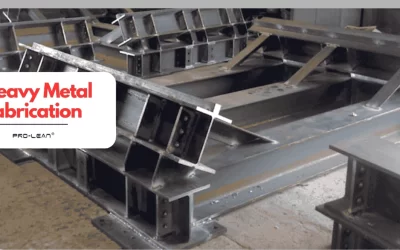
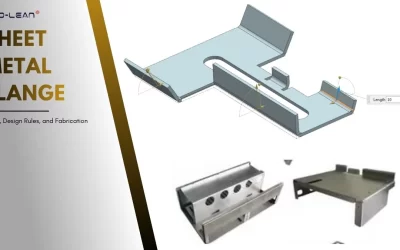
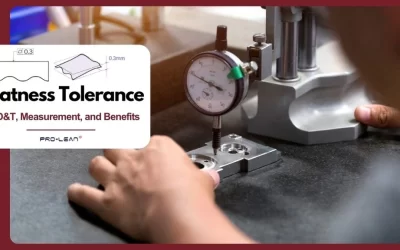
0 Comments